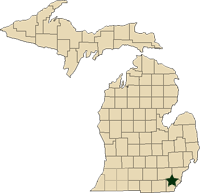Regional report on southeast Michigan field crops – September 29, 2011
Pest and field crop update for southeast Michigan.
|
Weather has been cool and wet this week, delaying corn silage, potato, pepper and tomato harvest. This area has not had a killing frost, which normally comes about October 12, depending upon the proximity to Lake Erie. So far for the month of September we have had about 6 inches of rain (about 3 inches above normal).
Alfalfa seedings are in and up. Ideally, farmers want six to eight weeks of growth in the early fall before a killing frost and cold late fall temperatures arrive. Hay supplies are good, prices are down. I expect some acreage to go into corn for 2012. Fall is the best time to kill an old hay field with a herbicide mix of glyphosate and 2,4-D spray.
Corn for most farmers has dented and some is at physiological maturity. Field sampling and some scattered early harvest indicate good yield potential. Because of the unusually wet month of September, there is also the potential for ear molds. I have already seen a few moldy ears where the ear was still upright and the husk was still tight. Farmers will need to plan to run the grain dryers this fall and may need to begin harvest earlier than desired, starting in the mid-20s of grain moisture.
Soybean harvest will begin as soon as the early maturing fields dry out. Varieties that are mid-Group II and earlier maturity appear ready to be harvested in this area. Only the double crop soybeans remain fully green. The yield potential appears better than last year when harvest started in early September due to the excessively dry, late summer conditions.
Wheat planting will begin as soon as soils dry out and early maturing soybeans are harvested. We are well past the 7- to 10-day window after the Hessian fly free date for all counties of southeast Michigan. Assuming a good month of October for soybean harvest, wheat acreage may increase compared to the average.



 Print
Print Email
Email




